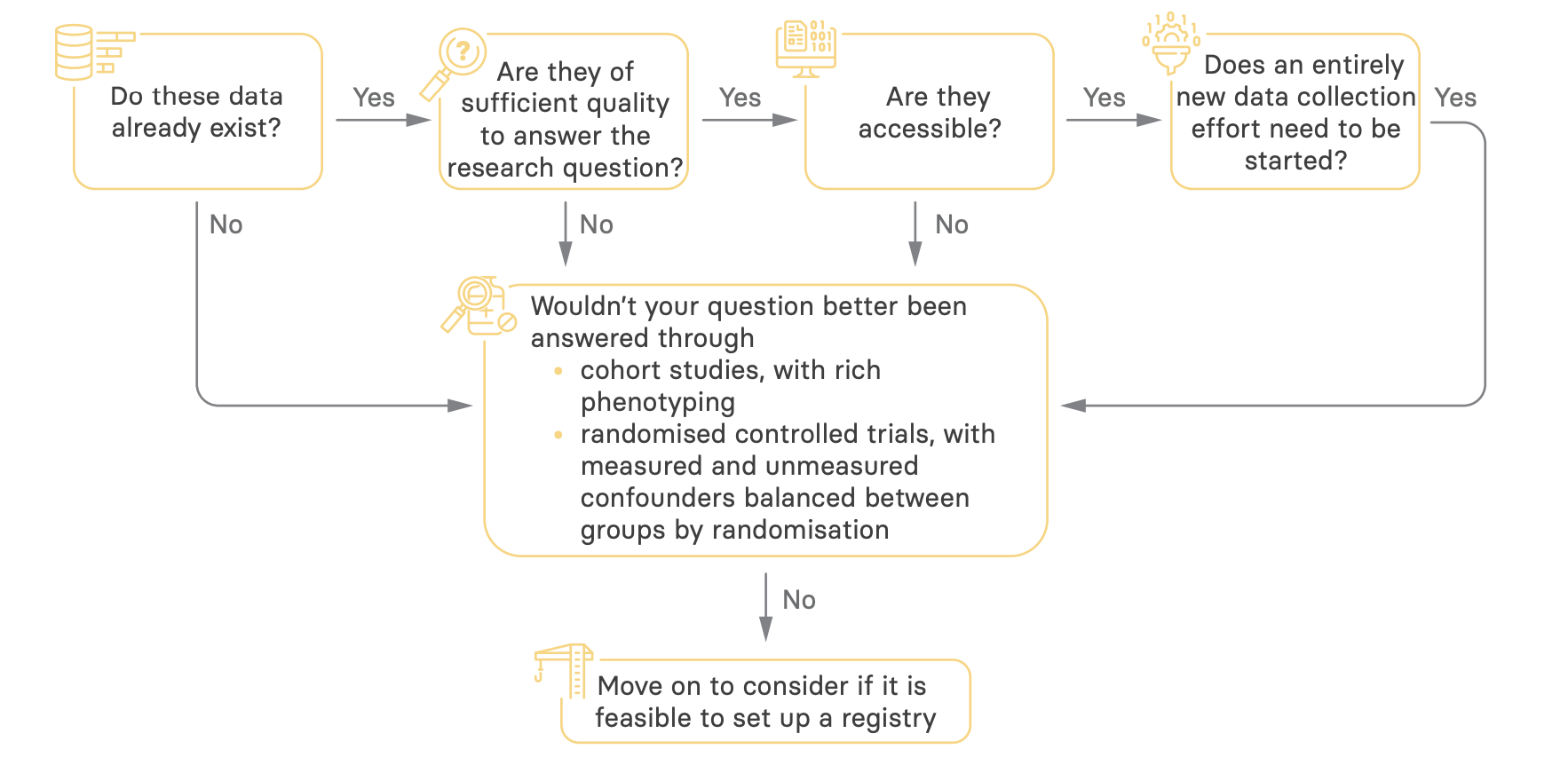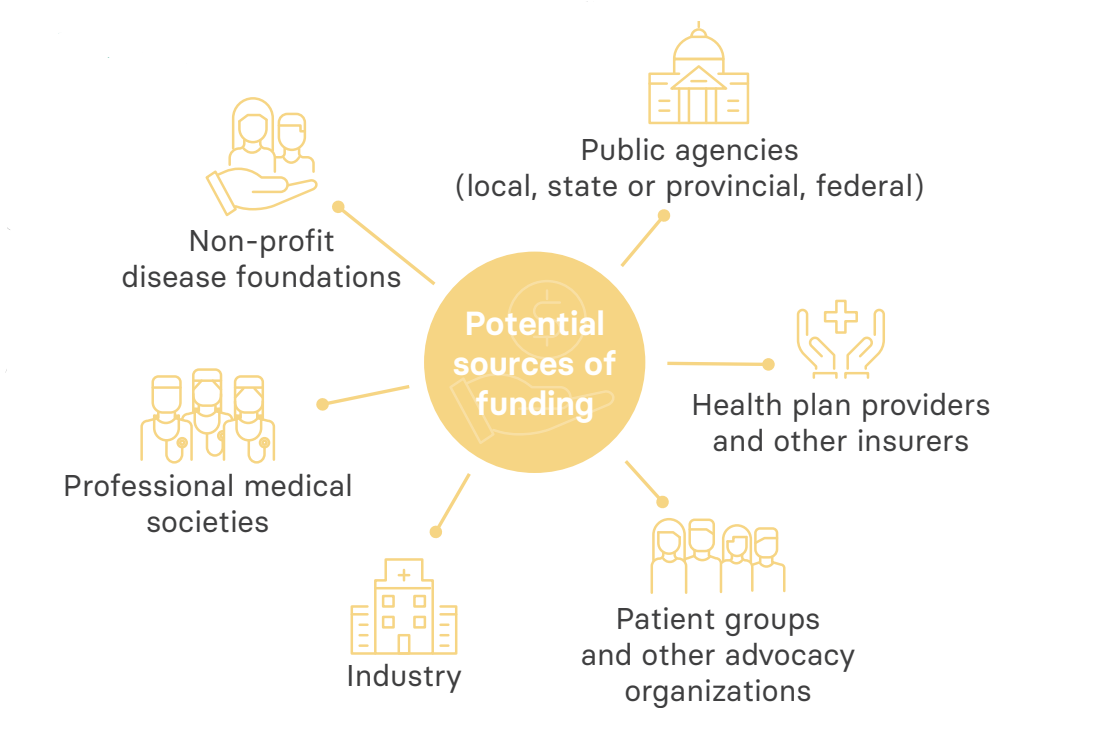Considering Feasibility and Appropriateness
Before you start
A successful registry is built on solid foundations and requires substantial planning. You should start by considering three basic questions about the appropriateness and feasibility of setting up a registry.
The primary purpose of most renal registries is to provide basic data for health service planning and quality assurance. This may include data on a public health concern about disease and treatment rates in the population overall or some vulnerable sub-groups of the population. When planning your registry, start by setting out the question or questions you need the registry to address, for example:
- What is the incidence and prevalence of a disease, e.g., chronic kidney disease, or a treatment for a disease, e.g., kidney replacement therapy (dialysis or kidney transplantation) in a population? Does it vary by geographic location? Are some groups at greater risk of the disease than others?
- What patient factors predict poor outcomes?
- What variability is there in clinical practice and does this predict outcomes?
- What is the impact of quality improvement programs on patient outcomes?
Having defined the primary purpose and the objectives of your registry, ask yourself the following questions:
- Does the data I need already exist?
- If so, is it of sufficient quality for my intended purpose?
- And, if so, is it accessible?
If the answer to all three questions is ‘yes,’ efforts should be made to avoid re-collecting data that exists elsewhere (e.g., electronic medical records or administrative health insurance claims data). Look into options such as data extraction and linking to these pre-existing data sources (more on this later).
Remember, not all public heath questions are best answered by creating a registry. If there is very little dialysis provision in your country, setting up a registry to demonstrate this may not be necessary. Some questions may be better answered through cohort studies, with rich phenotyping, or through clinical trials.
Beyond practical considerations relating to the healthcare system and politics of the setting for your registry, a key feasibility consideration is funding. Options for funding vary significantly and are determined by many local factors.
Potential sources of funding for a registry
A key element when considering the feasibility of a new registry relates to funding. The funding model for a registry should be determined by the needs of the registry.
While you won’t know the final cost of running your registry until you have worked through the steps in each section, at this stage, you should have an idea of who potential funders might be. Funders will likely want a share in planning and implementing, so approach them early on in the process. It is likely that engaging the relevant health authorities, such as your government health ministry, early on will prove important for your efforts.
You may conclude that securing funding for your registry is not an option, at least in the short- to medium-term. It is noteworthy that very few of the 20 registries comprising the highly effective Latin American Dialysis and Renal Transplantation Registry, established more than 30 years ago, have special funding. Considering costs is still useful, however, as it maximizes the opportunities for funding and influences and minimizes the registry’s reliance on voluntary work.
To secure long-term funding, undertaking pilot feasibility work, funded or unfunded, is also an option. This might persuade a more sustainable source to support the ongoing work after a successful pilot.
If the answer to all three of these questions confirms that a registry is appropriate and feasible, you are ready to take the next steps in planning a registry.


